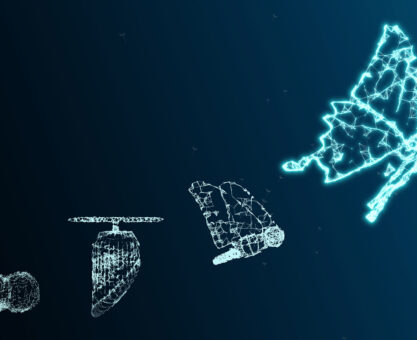One of the outcomes of the over-arching trend of outcome-based service becoming a key revenue strategy is that field service has also become a battleground for competition as well. As we enter more fully into a society that is increasingly focused on an instant and on-demand culture, the ability to solve our customers challenges in a quickly and efficiently is a major benefit, and for OEM’s data is perhaps the key weapon in their arsenal…
There is little doubt that the road towards a more outcome-based approach to service delivery is something that many field service organisations are currently travelling along. Indeed, in a post-Covid world where cashflow will be more challenging in the short term at least, then we could see the further establishment of such principles become deeper enshrined in how ‘business should be done’ – much like we saw with the development of Software as a Service (SaaS) models during the global economic downturn of 2008.
However, one thing that appears to be a fundamental rule of being able to establish any form a traction with outcome-based service strategies is that your clients must have an understanding an belief in how such an approach can be of significant benefit to them as the customer as well as you as the service provider.
“In previous companies I’ve worked at, when we have tried to push advanced services out to the market, one of the major challenges we faced was that there was little value in trying to convince customers, who didn’t see the value in connected services as a solution,” explains Jason Smith, Director of Field Service, EMEA, 3D Systems Corporation
“In fact, this is reflected in the approach we’ve adopted at 3D Systems. If a customer is on a maintenance contract and under warranty, then we will connect the machines for free. As far as we are concerned, in terms of the connectivity, the hardware aspect of the equation, which is where people typically perceive as the value, actually has very little value.
“What I discovered, certainly in my previous role,” Smith adds “is that the value is in the data which is provided and the insight that provides – particularly when your offering is part of a system. Companies really have to separate the hardware from the knowledge because the value proposition is at opposite ends of the scale.
“Hardware is worth a couple of thousand dollars, but the knowledge is where the real improvements are. One project we did in my last company based around such a premise yielded savings to the customer of €2.5M a year. It is in the data and the insight within that data – that is where the true value sits. However, it is only by having case studies and actual data that you can quantify and describe this value.”
“In terms of service we see third party service companies as competitors and one of the edges the data gives us is that we as an OEM can get data from our entire install base and a contractor cannot do that…”
Peter Deeming, Varian
One of the famous models of varying approaches to service is often defined as the ‘Caterpillar Model’ as it was first adopted by the earth moving giant Caterpillar and revolves around understanding that a customer will likely fit into one of three requirements ‘do it for me’, ‘do it with me’ or ‘let me do it myself.’ It is an approach that has become regularly mirrored amongst companies seeking to implement advanced service offerings.
However, could it be possible that as we look at increasing competition from third party service providers OEMs should now be conscious of an addition to this famous model?
“Reflecting on the three models of ‘do it with us’, ‘do it for us’ or ‘we’ll do it ourselves’, I would add a fourth model into this in that a third-party service contractor could also do the service work as well,” suggests Peter Deeming, Service Tools Manager, Varian.
“In terms of service we see third party service companies as competitors and one of the edges the data gives us is that we as an OEM can get data from our entire install base and a contractor cannot do that. This gives us a far greater depth of knowledge and insight that we can bring to the customer – something that gives us a distinct competitive advantage.
“This demonstrates that the value isn’t in the hardware, or even getting the data from one machine. But when you can get the data from all of your machines and exploring the trending and apply some AI and get all of the analysis, then you get some phenomenal insights, and that is where the true value lies.”
Christo Roux, Director, Field & Workshop Services, Outotec believes that the value that an OEM can provide goes even deeper again, explaining that for his organisation the digitisation of the field workforce has given them the capability to not only collect data from connected assets but from legacy assets as well – which gives them a significant advantage over any third party service provider and their OEM competitors.
“One of the things that we have found is that it is also about your ability to respond to your requirements. The speed in which we can get the equipment back up and running up is a massive differentiator to the third-party service providers,” Roux begins.
“We are an OEM providing service to our own customers, and we have a large portion of our install base that is legacy – it is literally thousands of pieces of equipment as we have a very large footprint across the globe. However, we are now starting to find a lot more insight within the internal data that we are collecting within our field service operation.
“This is largely the result of us having within the last two years moved onto a fully digital field service platform and the data that we are collecting from our visits, allows us to understand what we are doing on those visits because for us every failure or every operation has to be seen in context.
“Purely to look at the analytics coming from the equipment, we cannot always understand the operating context of a piece of equipment but we find a huge amount of value in the information and data that we are collecting through our field service visits and adding this directly onto our field service management solution adds a layer of value that our competitors simply cannot add.
“So for us the value is not just regarding having connected assets but also connected people as well.”
Want to know more? There is an Executive Briefing from this Field Service Think Tank Session which is available in the premium content library.













